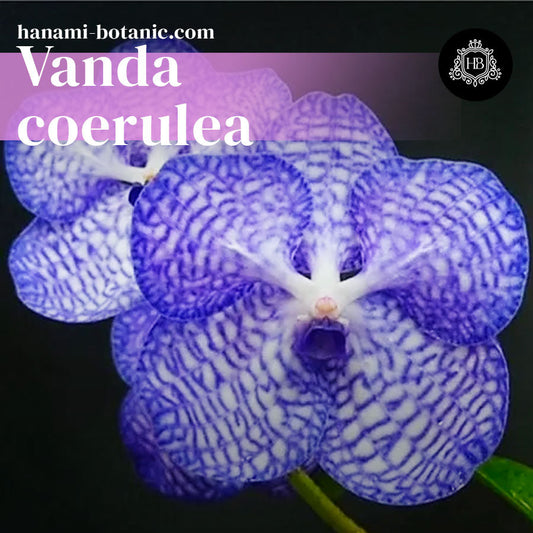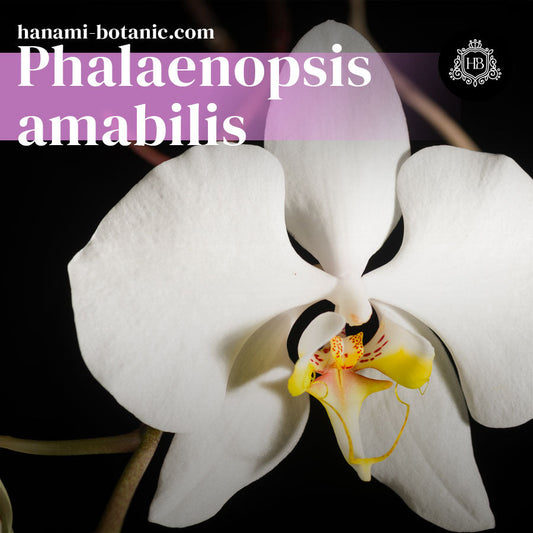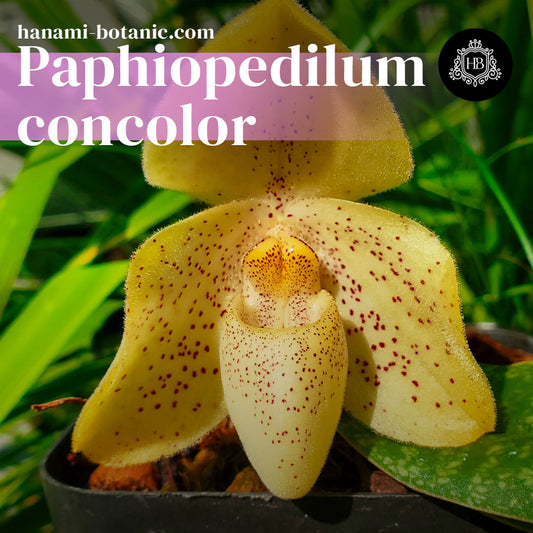Vanda coerulea - Blue Vanda Orchid
Christian St-PierreThe Vanda coerulea, also known as the Blue Orchid, is a marvel of nature that we adore for its striking beauty and rare blue flowers.
This orchid is a true gem for any collector, and what sets it apart is its ability to produce flowers in an almost unreal shade of blue.

Where to buy Vanda coerulea?Although this orchid can be challenging to find, it is sometimes available on specialized sites. You can check these sources to find Vanda coerulea:
Check these sites regularly to add this beautiful orchid to your collection. |
Origin and history
Native to the regions of the Himalayas, India, and Thailand, the Vanda coerulea was discovered in the 19th century.
It quickly gained popularity for its unique flowers and its ability to adapt to various growing environments.
It has a rich history in hybridization and is often used to create new orchid varieties.
How to grow Vanda coerulea: Care guide
Quick Summary:
- Scientific Name and Family: Vanda coerulea, family Orchidaceae
- Plant Type: Epiphytic orchid
- Light: Bright, indirect light
- Day and Night Temperature: 20-30°C (day), 15-20°C (night)
- Watering: Soak roots two to three times a week
- Humidity: 60-80%
- Substrate: Aerial support or bark mix
- Fertilization: Balanced orchid-specific fertilizer
- Growth: Moderate to fast

How to rebloom a Vanda coerulea?
To rebloom a Vanda coerulea, the key factor is the temperature difference between day and night. An ideal range is a 10°C difference.
Contrary to popular belief, fertilization is not the main factor for blooming, but it is crucial for the overall health of the plant.
Ensure your orchid receives adequate light. I use special LED plant lights, which have greatly helped in stimulating blooming.
Varieties and similar plants
Explore other varieties of Vanda and similar orchids such as:
These varieties share similar growing conditions and are equally captivating.
FAQ about Vanda coerulea
FAQ // Does one absolutely need an orchidarium or a Wardian case to grow a Vanda coerulea?
Growing a Vanda coerulea doesn't absolutely require an orchidarium or a Wardian case, but these controlled environments can offer significant benefits. Vanda coerulea, known for its striking blue flowers, is an epiphytic orchid that thrives in high humidity and bright light conditions, making it somewhat unique in its care requirements.
In a home setting, you can successfully grow Vanda coerulea with some attention to its specific needs:
Natural Environment: Vanda coerulea naturally grows on trees, exposed to high humidity and ample air circulation. Mimicking this environment at home can be challenging but rewarding.
Humidity: This orchid prefers high humidity levels, ideally between 70-90%. If you don't have an orchidarium, you can maintain humidity by using a humidity tray, room humidifier, or regularly misting the roots.
Light: Vanda coerulea needs very bright light, around 30,000 to 50,000 lux. An east or south-facing window is ideal. If natural light is insufficient, full-spectrum LED grow lights can provide the necessary intensity.
Air Circulation: Good air movement is crucial to prevent fungal infections and to replicate the orchid's natural habitat. Place a fan nearby to ensure gentle airflow around the plant.
Watering: Vandas are unique in that they prefer their roots to dry out completely between waterings. Water the roots thoroughly, allowing them to absorb moisture, and then let them dry out completely before the next watering. This typically means daily watering in hot weather and less frequently in cooler conditions.
Why Consider an Orchidarium or Wardian Case?
- Optimal Conditions: An orchidarium or Wardian case provides a controlled environment with consistent humidity, temperature, and light, ideal for the health and blooming of Vanda coerulea.
- Ease of Maintenance: These setups can simplify the care routine, reducing the need for frequent misting or environmental adjustments.
- Aesthetic Appeal: Victorian-style Wardian cases add a beautiful, elegant touch to your home while showcasing the stunning Vanda coerulea.
For those dedicated to providing the best care for their orchids, investing in an orchidarium or Wardian case can be worthwhile. However, with diligent care, you can also grow a healthy and thriving Vanda coerulea without one. Feel free to explore our exquisite Wardian cases at Hanami Botanic for an elegant and functional solution. Your feedback and suggestions are always welcome!
Discover my handcrafted Wardian Cases
FAQ // Is Vanda coerulea difficult to keep alive?
Like any orchid, it requires specific care, but it is relatively easy to grow with the right conditions.
FAQ // How do you care for a Vanda coerulea orchid?
Provide it with plenty of indirect light, water regularly by soaking the roots, and maintain high humidity.
FAQ // What kind of light does Vanda coerulea prefer?
Vanda coerulea, also known as the Blue Vanda, thrives in very bright light, which is essential for its growth and blooming. Here’s how to provide the optimal lighting conditions for this stunning orchid:
Natural Light: Vanda coerulea prefers bright, indirect light, ideally around 30,000 to 50,000 lux. Place your orchid near an east or south-facing window where it can receive ample sunlight without being directly exposed to harsh midday sun, which can scorch the leaves. If placing it near a south-facing window, use sheer curtains to filter the light.
Artificial Light: If natural light is insufficient, full-spectrum LED grow lights are a great alternative. These lights should provide the equivalent intensity of natural sunlight. Position the lights about 12-18 inches above the orchid, ensuring it receives 12-14 hours of light per day. This mimics the natural daylight cycle and promotes healthy growth and blooming.
Monitoring Light Levels: Use a light meter to ensure your Vanda coerulea is getting the correct light intensity. The leaves should be a healthy green color; if they turn too dark, the orchid needs more light, while yellowing leaves can indicate too much direct sunlight.
Providing the right light conditions is crucial for the health and flowering of Vanda coerulea. With the proper amount of bright, indirect light, this orchid will reward you with its stunning blue blooms.
FAQ // What is the best method for watering Vanda coerulea?

Vanda coerulea, like other Vanda orchids, requires a unique watering approach due to its epiphytic nature and preference for high humidity and excellent air circulation. Here’s the best method to keep your Vanda coerulea well-hydrated:
Daily Watering Routine: Unlike many other orchids, Vanda coerulea prefers to have its roots watered daily, especially during the growing season. This can be done by thoroughly soaking the roots in water for about 15-20 minutes each day. This mimics the frequent rain showers they receive in their natural habitat. Ensure the roots dry out completely between waterings to prevent rot.
Soaking Method: For thorough hydration, immerse the entire root system in a bucket or basin of water. Let the roots soak for 15-20 minutes, then allow them to dry completely. This method is particularly effective in hot weather when the orchid's water needs are higher.
Misting: In addition to daily watering, mist the aerial roots lightly once or twice a day to maintain humidity around the plant. Be cautious not to mist too heavily to avoid water pooling in the leaf axils, which can lead to rot.
Water Quality: Use room temperature, distilled, rainwater, or reverse osmosis water to avoid mineral buildup that can damage the roots. Vanda coerulea is sensitive to water quality, so avoiding tap water with high mineral content is crucial.
Humidity and Air Circulation: Maintaining high humidity levels (70-90%) is essential for Vanda coerulea. Using a humidity tray, room humidifier, or placing the orchid in a well-ventilated bathroom can help. Ensure there is good air circulation around the plant to prevent fungal infections and promote healthy growth.
Seasonal Adjustments: In cooler months, reduce the frequency of watering to prevent root rot. Monitor the orchid’s environment and adjust watering as needed to maintain optimal conditions.
By following these watering guidelines, you can ensure your Vanda coerulea remains healthy and vibrant, producing its stunning blue flowers. Proper hydration, along with good humidity and air circulation, will help this beautiful orchid thrive.
How to Grow Vanda coerulea: Detailed Care Guide
Plant Type
Epiphytic orchid
Light
Bright, indirect light. I use LED lights specially designed for plants, which ensures optimal growth.
Temperature
20-30°C (day), 15-20°C (night)
Watering
Soak the roots two to three times a week, especially during active growth periods.
Humidity
Maintain humidity levels at 60-80%. A humidifier can be very helpful, especially in winter.
Substrate
Aerial support or bark mix. The roots need to be well-aerated to prevent rot.
Fertilization
For Vanda coerulea, I use an orchid-specific fertilizer, such as the MSU (Michigan State University) formula. This fertilizer is perfectly balanced to meet the nutritional needs of orchids.
- MSU Fertilizer: Provides an optimal balance of essential nutrients, promoting healthy growth and abundant blooming.
- Water pH: Maintain a pH of 5.5 to 6.5 for optimal nutrient absorption.
- Silicon: Strengthens plant cells, improving resistance to diseases and environmental stresses.
- Fresh Algae: A natural source of micronutrients and phytohormones, stimulates growth and strengthens root health.
- Superthrive: A vitamin supplement that helps reduce plant stress and stimulate growth.
Used together, these products create a nutrient-rich environment for Vanda coerulea, ensuring vigorous growth and spectacular blooming.
Growth
Vanda coerulea grows at a moderate to fast rate under optimal conditions.

I'm Christian. Passionate about orchids and terrariums for many years, I share my botanical adventures, practical advice, and personal anecdotes. I also create terrarium-style mini greenhouses to help your orchids thrive. Feel free to contact me—I’d be happy to help you on this beautiful botanical journey.
References
Conclusion
We hope this detailed guide on Vanda coerulea inspires you to enrich your orchid collection and explore the wonders of growing plants in mini greenhouses.





